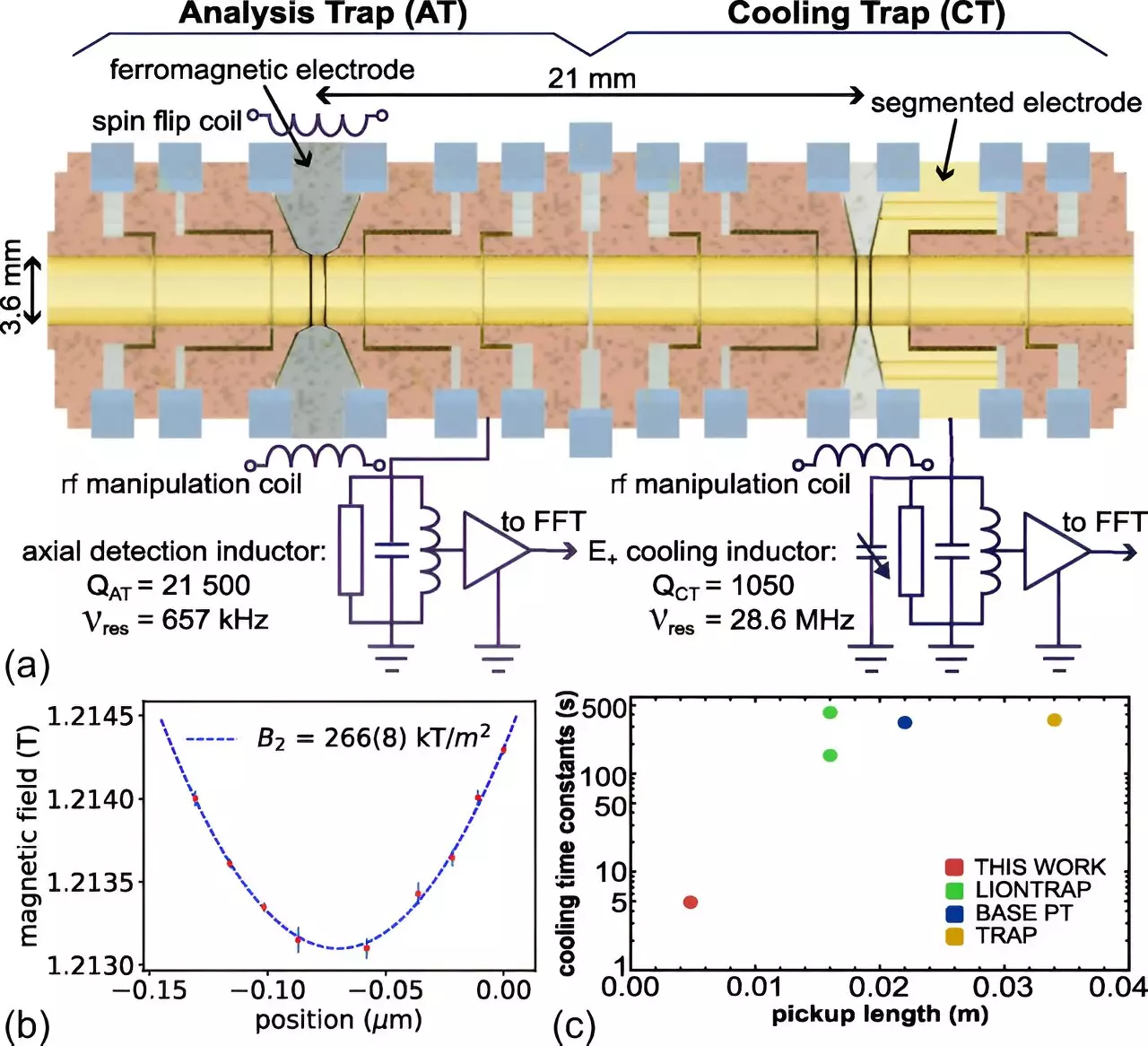The universe is a vast expanse filled with matter, but why is there an apparent absence of antimatter? This intriguing question has puzzled scientists for decades. The BASE international research collaboration at CERN, led by Professor Dr. Stefan Ulmer from Heinrich Heine University Düsseldorf, has made significant strides in addressing this fundamental discrepancy. By focusing on measuring the mass and magnetic moment of antiprotons with unprecedented precision, the researchers aim to uncover potential matter-antimatter imbalances.
In their quest to unravel the mysteries of the universe’s matter-antimatter composition, the BASE collaboration has developed a cutting-edge trap capable of rapidly cooling individual antiprotons. This innovative trap represents a crucial advancement, as it enables the researchers to achieve levels of cooling efficiency previously thought unattainable. With the aid of this revolutionary technology, the team hopes to shed light on the elusive nature of antimatter and its role in the cosmic balance.
The Standard Model Conundrum
According to the standard model of particle physics, matter and antimatter should be produced in equal quantities, resulting in a universe devoid of material objects. However, the presence of tangible matter suggests a minute excess of matter over antimatter, challenging established scientific frameworks. Physicists have long grappled with this conundrum, striving to expand the boundaries of the standard model through meticulous measurements and groundbreaking experiments.
Unprecedented Precision in Antiproton Analysis
At the heart of the BASE collaboration lies a commitment to conducting high-resolution measurements of fundamental physical parameters related to antiprotons. By scrutinizing the spin-flip quantum transitions of ultra-cold antiprotons, the researchers aim to glean insights into the magnetic properties of these elusive particles. Through meticulous observation and analysis, they hope to discern whether protons and antiprotons exhibit identical magnetic characteristics.
One of the pivotal achievements of the BASE collaboration is the development of a novel cooling method that drastically reduces the time required to prepare individual antiprotons for analysis. By combining Penning traps into a Maxwell’s daemon cooling double trap, the researchers can selectively target the coldest antiprotons for spin-flip measurements, eliminating the need to cool warmer particles. This groundbreaking approach has streamlined the experimental process, enabling faster and more accurate data collection.
Future Prospects and Innovations
Looking ahead, Professor Stefan Ulmer envisions constructing a mobile particle trap capable of transporting antiprotons from CERN to a new laboratory at HHU. This ambitious endeavor aims to enhance measurement accuracy by leveraging state-of-the-art trapping technology. By harnessing the power of particle traps developed by luminaries such as Wolfgang Paul and Hans G. Dehmelt, the BASE collaboration continues to push the boundaries of scientific exploration in the realm of antimatter research.
The remarkable progress achieved by the BASE collaboration underscores the importance of continuous innovation in the field of particle physics. By leveraging cutting-edge technology and interdisciplinary expertise, researchers are poised to unravel the mysteries of antimatter and unlock the secrets of the universe’s enigmatic composition. Through a combination of precision measurements, advanced trapping techniques, and unwavering dedication, scientists stand on the cusp of a new era of discovery in the realm of antiproton research.


Leave a Reply